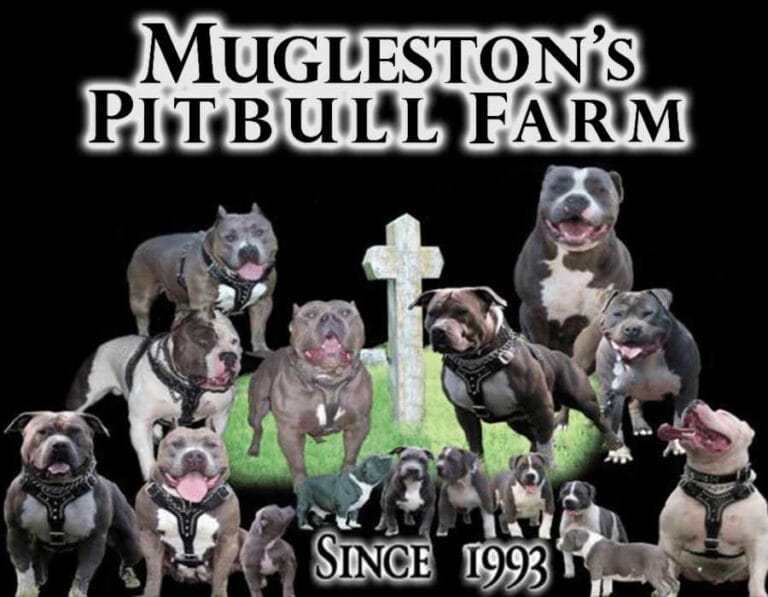
How to Train a Pitbull to Not Be Aggressive
Did you know pit bulls have temperaments similar to golden retrievers? This is according to the American Canine Temperament Test Society. This fact shows a big misconception about pit bulls, often caused by bad news stories. But, with the right training, we can make these dogs into friendly pets. Training them to not be aggressive takes patience, consistency, and positive feedback. Let’s explore how to do this.

Keys to Train Pittbull
- Pit bulls are reported to have temperaments similar to golden retrievers.
- Early socialization is crucial in pit bull training to reduce aggression.
- Pit bulls have a historical reputation due to their use as fighting dogs.
- Consistent, positive reinforcement methods yield better training results.
- Properly trained pit bulls can excel in obedience and dog sports.
1. Immediately Socialize Your Pitbull Dog Starting from a Puppy
Early training is key to raising a good dog. Pitbull puppies need socialization from 14-16 weeks old.
Introduce your puppy to people of all ages. This helps them learn to adapt and behave well. Playdates with other puppies teach them how to play and control their bites. Listening to sounds like thunderstorms and traffic helps them get used to different noises.
Sign up for a socialization class to give your puppy new experiences safely. Wait until they’re fully vaccinated before taking them to dog parks. Always watch over your puppy during these times to keep them safe and help them grow.
Being consistent and patient is important. Too many new things at once can scare them. Ignoring their fears can make them more anxious. Start early to make socialization easier and help them adjust better.
2. Preventing Biting Behavior
We use special methods to stop biting and encourage good behavior. It’s important to know what makes a pitbull bite.
Bite inhibition is when a dog learns to control how hard they bite. Tools that help with this can be useful. Time-outs can also stop mouthy behavior in dogs. If your dog has bitten before, use a muzzle to help them get used to other dogs.
Keeping your dog busy with new toys and playdates can stop them from biting people. Experts like Certified Applied Animal Behaviorists can help with aggressive dogs. Using taste deterrents can also stop dogs from mouthing things they shouldn’t.
Most dog bites happen at home, and most victims are family or friends. This shows why it’s so important to prevent bites at home. Watching your dog, giving them the right toys, and rewarding good behavior are all key.
| Prevention Method | Effectiveness |
|---|---|
| Providing Appropriate Toys | Helps in redirecting dog’s behavior |
| Supervision | Crucial in preventing biting incidents |
| Positive Reinforcement | Builds trust, better behavioral outcomes |
| Impulse Control Training | Assists with bite inhibition and behavioral management |
3. Teaching Your Pit Bull to Socialize with Other Dogs
Teaching a pit bull to get along with other dogs is key for peaceful interactions. Pit Bulls might be more likely to be scared or aggressive around other dogs. So, it’s important to start socializing them early to ensure they get along well.
Start socializing your pit bull when they are puppies. This gives them a better chance of getting along with other dogs. But, keep up with socialization even as they grow older. Make sure your dog is up to date on their shots before meeting other dogs.
Here are some important steps to follow:
- Command Training: Teach your pit bull to listen to basic commands like “sit,” “stay,” and “leave it.” This helps keep their behavior in check when they meet other dogs.
- Controlled Exposure: Gradually introduce your dog to others. Start in a place where you can control the introductions.
- Positive Reinforcement: Use small treats to reward good behavior. This helps avoid aggression or guarding.
- Consistency and Patience: Socializing your pit bull takes time, often several months. Keep up the good work and be patient.
- Evaluate Progress: Watch how your dog is doing. If they still act aggressively, get help from a professional trainer.
Understanding the value of inter-canine social skills and using the right training methods is crucial. This way, your pit bull will become a well-behaved and confident friend. They will show their true potential as loving, loyal, and playful pets.
4. Improve Good Behavior with Advanced Training and Dog Sports
Engaging our pit bulls in advanced obedience and dog sports is a great way to use their energy and smarts. It keeps them mentally sharp and physically active. It also helps them stay calm and friendly.
Agility training for pit bulls is a great example. It uses their strength and energy in a good way. Training for agility and other dog sports makes them more focused and dedicated. It turns their energy into something positive.
Training our pit bulls in advanced ways strengthens our bond with them. By focusing on advanced obedience and dog sports, we help them stay balanced and happy. It’s good for their well-being and makes them feel fulfilled.
5. Always Check for Training Problems
As Pit Bull owners, we must watch for signs of training issues. These problems can pop up without warning. But spotting them early can stop bad behaviors from getting worse. Cesar Millan, a trainer from Los Angeles, says it’s key to have set routines to keep control and trust.
Keep an eye on your dog’s actions and notice any changes. If you see stubbornness or aggression, get help from a pro. Experts in dog training can help fix these issues with special classes.
6. Get Canine Good Citizen Certification
Getting the Canine Good Citizen certification is a big step. It shows you care about being a responsible pet owner. It also helps your dog learn good manners. The American Kennel Club (AKC) started this program in 1989.
The test has 10 parts. It checks if your dog can behave well at home and in public. Here are some things the test looks at:
- Accepting a Friendly Stranger
- Sitting Politely for Petting
- Appearance and Grooming
- Walking on a Loose Lead
- Walking Through a Crowd
- Sit, Down, and Stay on Command
- Coming When Called
- Reaction to Another Dog
- Reaction to Distractions
- Supervised Separation
Training for the Canine Good Citizen certification helps your dog a lot. Classes last six weeks. Getting the Canine Good Citizen certification has many benefits. It’s needed for therapy dogs and some dog competitions. It also shows your dog is well-behaved in public.
7. Train Your Pit Bull with Positive Reinforcement
Training a Pit Bull to avoid aggression needs patience, consistency, and positive reinforcement. Clicker training is a great method. It teaches pit bulls to link the clicker sound with rewards. This, along with healthy training treats, makes them eager to learn and follow commands.
Training with a leash, crate, and structured feeding helps too. Leash training builds trust and obedience.
Being consistent in commands and expectations is crucial. Pit bulls respond well to steady leadership and routines. Regular interaction with humans and other dogs makes them friendly and well-adjust
Are Pitbulls Smart and Easy to Train?
Pit bulls are very smart and eager to please. This makes them one of the most trainable dog breeds. Using positive reinforcement in training helps them learn and behave well.
It’s important to start training early and socialize them well. This helps them grow into well-mannered dogs. Their energy and strong character need early training to manage their behavior.
Focus on rewarding good behavior. If they do something bad, correct them right away. This helps them learn faster.
In conclusion, pit bulls are great for training. They learn fast and adapt well. With patience and consistency, they become loyal and friendly companions.
Training Pitbull FAQ
Why are Pitbulls So Aggressive?
Pit bulls are often seen as aggressive, but they can be friendly with the right care. Their behavior depends on how they are raised and trained. With the right approach, they can be loving family pets.
When should I start socializing my pitbull puppy?
Start socializing your puppy early to help them grow up well-adjusted. Introduce them to people, places, and other animals. This helps them feel comfortable in different situations.
How can I train my pitbull to minimize biting behavior?
To reduce biting, understand what triggers it and teach them to redirect. Teach them commands like “look,” “stay,” and “come.” Practice these in different places to help them focus.
How do I teach my pit bull to socialize with other dogs?
Pit bulls may not get along with other dogs naturally. Teach them to interact well with others. Use commands and controlled meetings to manage their behavior.
What are some advanced training methods for pit bulls?
Use obedience and dog sports to keep pit bulls active and focused. Activities like agility and rally obedience are great. They keep your pit bull happy and well-behaved.
What should I do if I encounter training problems with my pit bull?
Watch for signs of training issues and seek help from experts. Special classes can help with aggressive behavior. A strict training plan is key to channeling their energy.
How effective is positive reinforcement training for pit bulls?
Positive training, like clicker training or treats, works best for pit bulls. It encourages them to learn and obey. Treats during training reward good behavior, making them well-adjusted.
